In Utah, it is possible to spot 8 different species of Hawks. These are:
- Red-Tailed Hawk
- Northern Harrier
- Northern Goshawk
- Ferruginous Hawk
- Swainson’s Hawk
- Sharp-shinned Hawk
- Cooper’s Hawk
- Rough-legged Hawk
Want to learn more? This book on the Birds of Prey of North America is a fantastic read!
For hawks, Utah has a climate that provides a welcome mixture of the temperate warm months of the American midwest and the crisp winds brought about by high elevation.
As many raptors in the U.S. are Canadian breeders who fly south, Utah mimics the weather of their homes, except with lesser extremes in winter.
Below, we provide a list of the most frequent visitors to Utah in the hawk family, so adventurous watchers know how and when to spot these consummate hunters:
Want to attract birds of prey to your yard? Take a look at our article!
What Hawks can be seen in Utah?
1. Red-Tailed Hawk
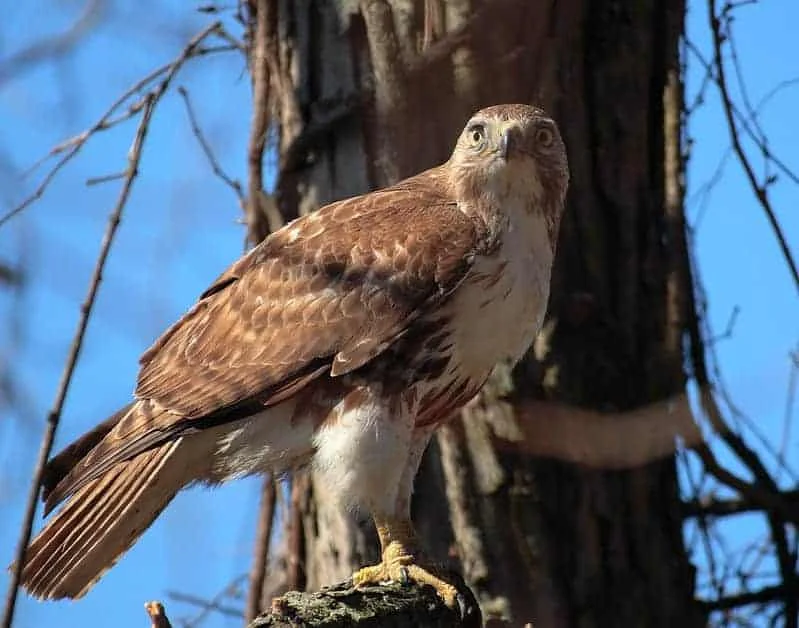
As the most common North American hawk, the red tail has spread throughout the U.S.
They are the most adaptable to human contact as well, often perched on signposts near isolated stretches of highway- hence the name ‘roadside raptors’.
Red-tailed hawks can also be found by listening for their calls, a shrill, screeching cry that has become the default sound for all birds of prey in movies.
They are among the largest of the North American hawks, and are easily recognizable by the bright red tailfeathers of their namesake.
The rest of the hawk’s body, face, and crown is most often an even brown or gray mixed with spots of lighter brown tips throughout, with a whitish belly and underside speckled with the same colors.
2. Northern Harrier
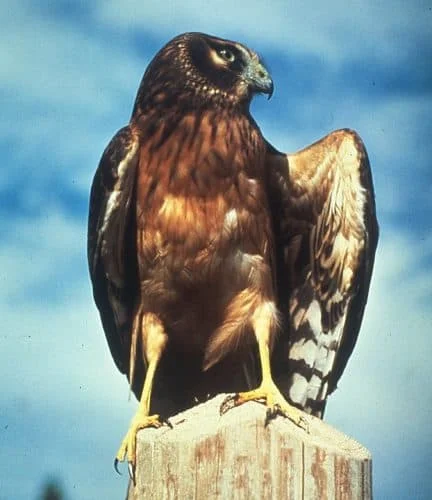
These arctic hawks breed exclusively in Canada, but spread throughout the US as the weather changes.
Harriers are the owls of the hawk family, with their large round heads that connect with stout bodies, and even a circle of distinct feathers around its eyes and beak that resemble an owl’s faceplate.
Most hawks would rather sit in a lookout perch atop a tree and wait, but harriers are far more active hunters, often gliding for hours over low-lying marshlands before swooping down.
Color patterns are usually a deep brown or gray that covers the bird in its entirety except the wings, which may also cover the stomach or be broken up with a lighter version of the brown or grey in some.
Like any arctic bird, concentrations are most frequent at the northernmost part of any given state, since they like to remain where it’s coolest even when flying south.
3. Ferruginous Hawk
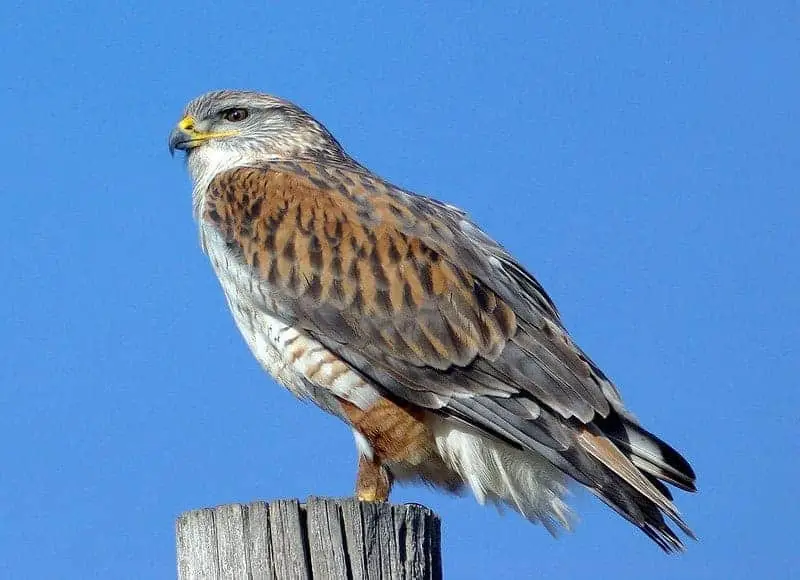
This large hawk breeds, hunts, and overwinters in different parts of Utah, maintaining a year-round presence in some form.
The name ‘ferruginous’ refers to the rust-colored feather patterns on the hawk’s shoulders, crown, and parts of its face, which contrast sharply with bodies that are either stark white or deep brown elsewhere.
While ferruginous hawks are among the most comfortable with human approach, this may have contributed to a decline in their numbers, which is partly due to hunters (the other part is habitat destruction).
However, you can still spot these birds flying over lowland marshes with nearby water sources and tall pine trees that serve as perches.
4. Swainson’s Hawk
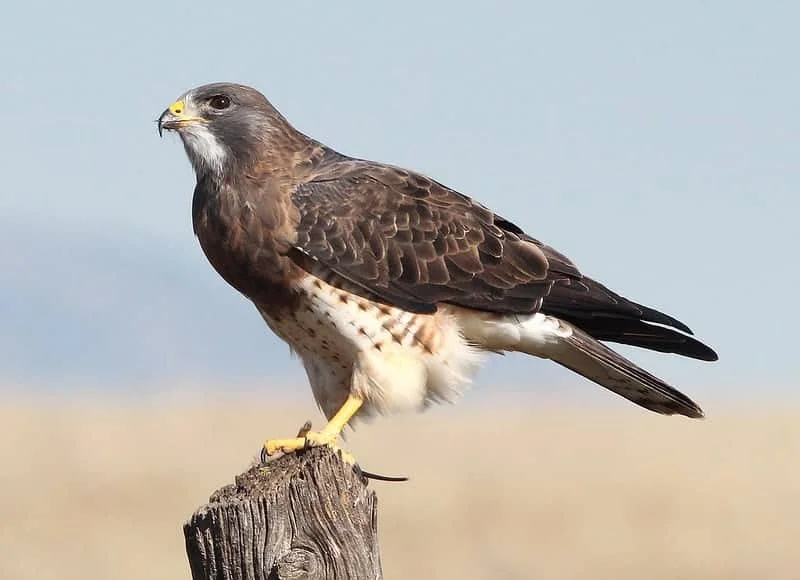
These prairie land raptors love the climate of the American midwest, both for breeding and hunting, and Utah’s is a perfect example.
While they abandon the U.S. in the winter for South America, their presence in the warm months is substantial. A Swainson’s hawk’s coloring is an elegant mixture of dark grey or dark brown with a stark white underside and a brown ‘scarf’ of feathers across its neck.
Rare versions are almost completely white with gray wingtips and tails, but they have the same brown scarf about the neck. Look for this bird in the tall pines near lowlands, which provide excellent vantage points from which to strike at smallish rodents.
5. Sharp-shinned Hawk
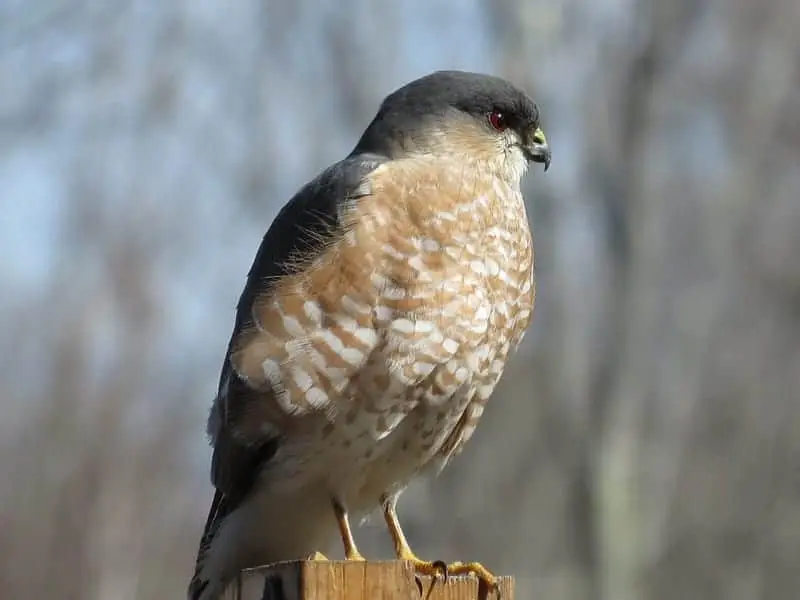
This hawk is the smallest and most mobile on the list, covering airspaces from South America to northern Canada and all parts between.
These patterns, and some raptors’ tendency to travel long distances in kettles (large flocks), make the sharp-shinned hawk an ideal candidate for watchers, despite its size.
They are usually blue-gray on the wing, back, and crown, with a rust-colored underside striped in white, or a white underside striped in rust, depending on your perspective.
They are visually similar to and often mistaken for Cooper’s hawks, only the latter is much bigger if they’re compared side-by-side.
They can also be distinguished from the Cooper’s by their bulbous eyes, which are much larger compared to the size of their heads.
6. Cooper’s Hawk
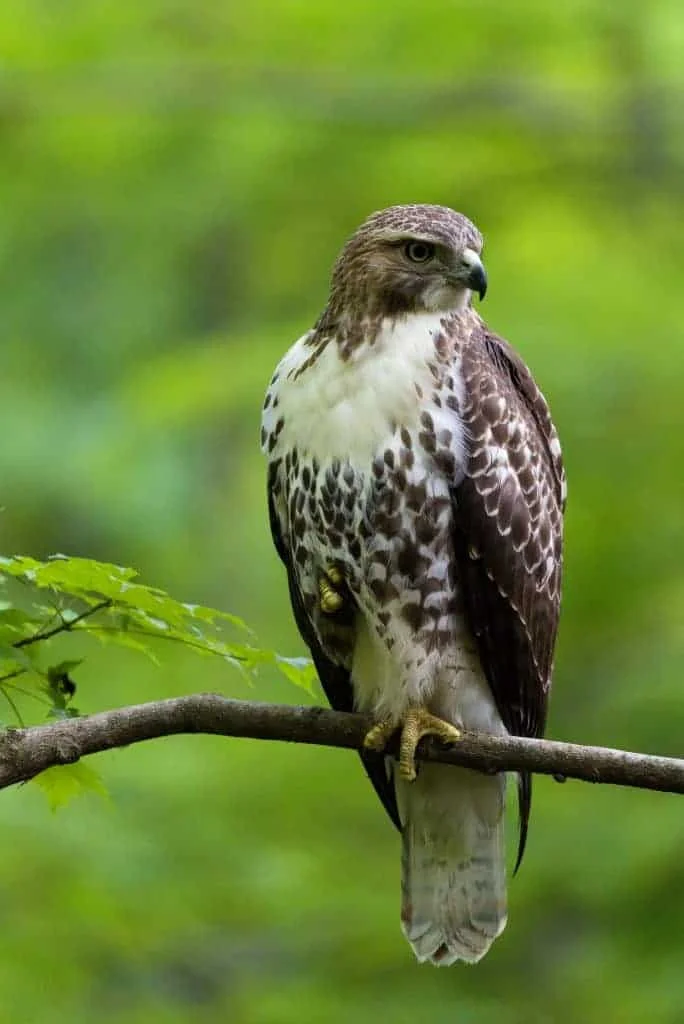
The “sharpie’s” larger twin is a year-round resident of Utah, darting among the pine trees where their favorite prey gathers on the ground or in the air.
Unlike most raptors, Cooper’s do most of their business in the woods rather than diving at lowlands from the treelines.
Like the sharp-shins, they are blue-gray on the crown, back, and wings, with lighter undersides, though the ‘rust-white’ combo of the underbelly is more light brown and white on Cooper’s.
These are among the most sociable of the hawk family in terms of their comfort with humans, often venturing near campsites and roadsides like the red-tailed hawk looking for food.
7. Northern Goshawk
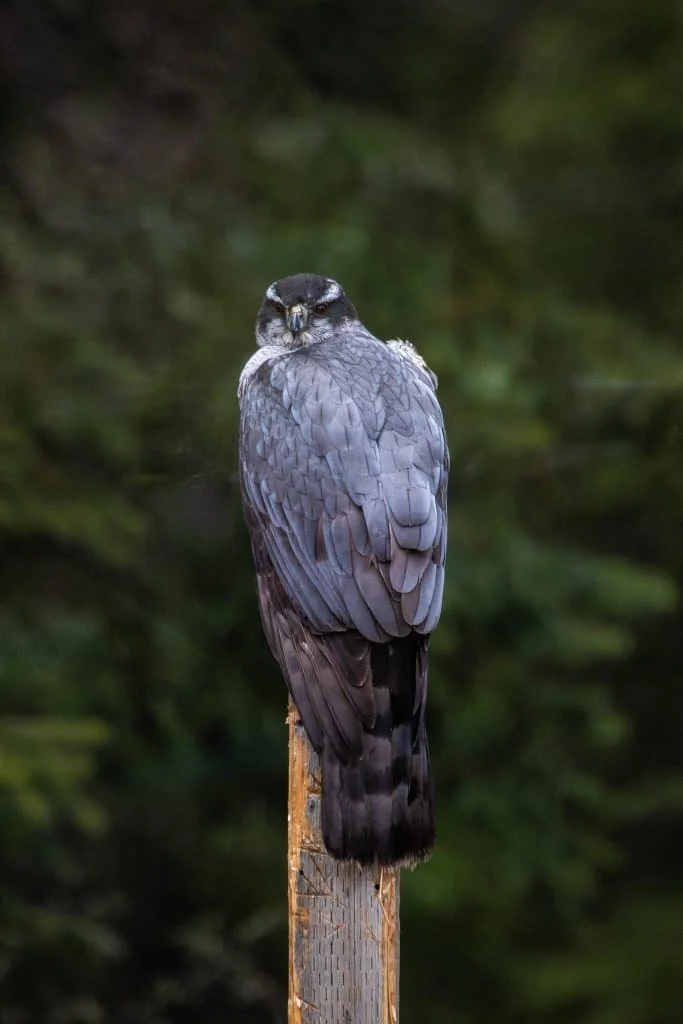
This acrobatic raptor zips between the trees of dense forests or divebombs lowland riparian zones for prey, displaying a show of aerial dexterity uncommon even among its kin.
Northern goshawks maintain a sparse year-round presence in Utah, about as populous as they are anywhere in North America. Beyond their flight capabilities, goshawks are recognizable by the distinct ‘bandit’s mask’–a gathering of black feathers around each eye with a prominent white ‘eyebrow’ above it.
Their plumage ranges from shades of grey, white, and blue gray, usually with light sides covering the stomach and face and darker tones across the back, wings, and crown.
Less common morphs may be all-white or all-grey with sporadic accents of lighter shades across.
8. Rough-legged Hawk
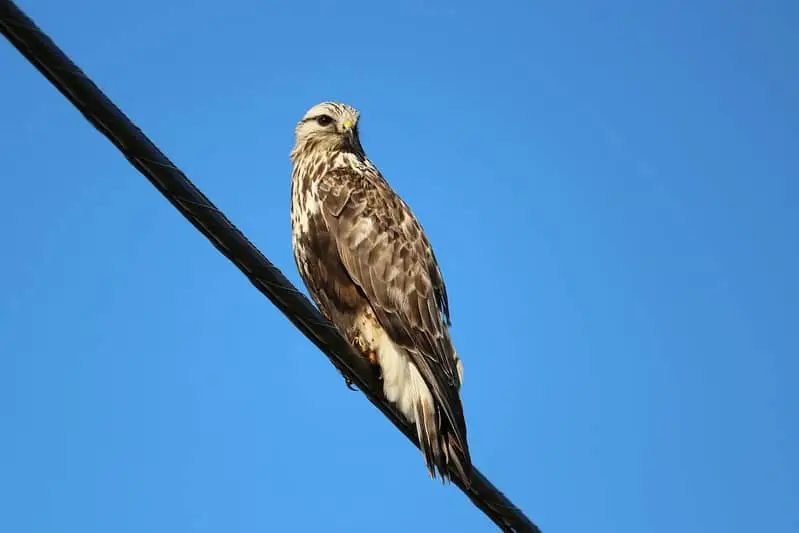
Perhaps the most cold-acclimated of all ‘northern’ hawks on this list, the rough-legged hawk breeds at the northernmost part of Canada, where the snow is extreme.
Like the harrier and others, they make their way south during the peak of the cold season to reside in winter climates where there is more food, including northern Utah.
Also like the harrier, this hawk tends to soar above hunting grounds for extended periods rather than spying prey from a treetop which makes them adaptable hunters in any environment.
They prefer places of high elevation like the mountains and pine forests where trees grow the tallest.
The rough part of their legs are the feathers that extend from their body to feet. Else, look for a color pattern that is mostly grey or brown, speckled throughout with lighter shades of that color and white, or less often, a bird that appears mostly white with dark wings.
References
- https://www.audubon.org/field-guide/bird/northern-harrier
- https://www.audubon.org/field-guide/bird/swainsons-hawk
- https://www.audubon.org/field-guide/bird/ferruginous-hawk
- https://www.audubon.org/field-guide/bird/northern-goshawk
- https://www.audubon.org/field-guide/bird/sharp-shinned-hawk
- https://www.audubon.org/field-guide/bird/red-tailed-hawk

About Us
We are avid bird-watchers who recently retired, allowing us more time to travel the world. Fortunately, we have managed to visit numerous countries around Europe, Asia, and America. Watching and photographing birds has been a passion for many years and we are making the most of the extra time on our hands!
